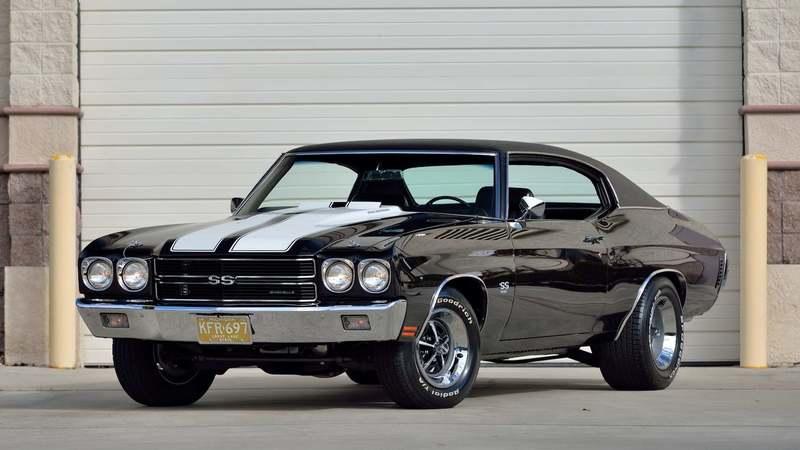
You probably think of the Dodge Charger when you think about 1971 cars. The 1971 Dodge Charger had a 115-inch wheelbase, six coupes, three hardtop series and a spacious interior. Basic models came in slant six and 318ci engines. You could also choose the Hemi option. The SE and 500 were the new trim levels. These added features included extra sound insulation and carpeting, as well as a three speed manual transmission and wood-grain-plastic.
Chrysler's 1971 cars had automatic headlights and tilt wheel
By 1971, the Chrysler lineup consisted of four-door sedans, two-door hardtops, and wagons. Every car in the line had a sleek fuselage and the C body architecture. Other improvements include increased rear footroom as well as automatic headlights. Many models included tilt wheel and automatic front lights. Chrysler also offered automatic transmissions that made driving more enjoyable.

Chrysler's 1971 cars came with automatic temperature controls
Late in 1967, the Chrysler Imperial was the first car to get automatic temperature control. Although the Chrysler Imperial was the only car of its kind to offer this feature at the time, all other models offered it on their option list. It was also standard on Ford Thunderbirds. In the 1970s, even less expensive cars were offered with automatic climate control. This feature was a hallmark of the era's finest cars. The sidebar below lists the most popular models.
Ford's 1971 Mustang Mach 1 had an automatic downshift with part-throttle
One feature was unique to the Mustang Mach I when it was released. Ford tried the part-throttle downshift on the track. The car's six speed transmission includes part-throttle downshifting. It allows you to accelerate while in an upshift. Although it isn't available on the Mustang GT this feature was added to Mach 1.
Dodge's 1971 cars had a modified power steering system for better road feel
The Charger body style was introduced by the company in 1971. While the Coronet was the original design, this car failed to sell. It was a four door car with the 318 and 6 engine engines. The Dodge Coronet was scrapped and replaced by the Charger. This four-door sedan and wagon is available in both wagon and sedan versions. After its redesign for 1971, the Charger gained popularity.
1971 GM cars were equipped with Torsion-Quiet Ride
GM's Torsion-Quiet Ride system was introduced in 1971. It was designed to isolate leaf springs and subframes from each other, reducing noise and vibration as well as stiffness. However, it had many drawbacks when cornering. Mopar expert Rick Ehrenberg recommends retrofitting early suspension parts to improve performance and reduce noise. What are the Torsion Quiet Ride benefits?

Ford's 1971 Mustang Mach 1 featured a new 360-degree engine
1971 Ford Mustang Mach 1 is a sports car. It was made for the first time in 1969. It was the successor to the Mustang GT's previous generation and featured a 360-degree engine. The Ford Mustang Mach 1 won several major races during its production, including the North American Rally Championship. It was awarded many performance awards, including the "Best of Show", honor.
FAQ
What qualifications do you need to be a mechanic?
You will need to pass several exams in order to become a mechanic. These include:
-
A general knowledge test
-
A practical examination
-
An apprenticeship test
These tests are designed to ensure that you understand the basic concepts of mechanical engineering and physics before you start working as a mechanic.
Once you pass these tests you can become a mechanic. An apprenticeship is still required. This will involve training in your trade.
To fully understand the mechanics of vehicle repairs, you'll need workshops and classes. Additionally, you will need to work with experienced mechanics.
You'll need a high level of concentration and attention to detail if you want to succeed as a mechanic. Vehicle repairs require you to be very attentive.
To become a successful mechanic you'll need patience. This may not be the career path that you want if you aren't able to follow directions.
However, if you love cars or enjoy working on them, you might be happy in this field.
What can I do to fix my car as an hobby?
Why not make it a hobby if you're interested in cars? You could learn how to repair them, buy parts for them, sell them or just enjoy them. If you are looking for something new, this would be a great hobby.
It's difficult to make this a fulltime job. This requires dedication and hard work. Also, you will need to put a lot of money into it.
You might not have a compelling reason to get involved in the car industry.
Is it worth becoming a mechanic?
The answer depends on what you are looking for in life. If money is your goal, then you can answer "yes". But if you are searching for meaning and purpose, then you should not answer this question.
If you don’t have any mechanical skills, it’s pointless to get into it. It will just waste your time. It's not going to make you rich. You won't become famous. And it's unlikely to change your life.
This would require you to spend many years learning how to properly do everything. You would still need to hire someone to fix your car if it breaks down. Most people won't bother to do it. They find something better.
Summarising, if your goal is to make lots of money, go for it. You can't live a meaningful existence if your goal is to make a living in the mechanic's business.
Statistics
- Apprentice mechanics earn significantly less hourly than mechanics who have completed training, with a median wage of approximately $14.50 an hour, according to PayScale. (jobhero.com)
- According to the BLS, the median annual salary for automotive service technicians and mechanics in the United States was $44,050 in May 2020. (uti.edu)
- The U.S. Bureau of Labor Statistics (BLS) reports that the job outlook for automotive service technicians and mechanics is expected to decline by 4% from 2019 to 2029. (indeed.com)
External Links
How To
How to become an Automotive Technician
An automotive technician performs repairs and maintains vehicles. He/she works at automotive shops, garages or service centers. He/she works with customers to repair their cars and trucks, ATVs or snowmobiles. An automotive technician must know how to diagnose problems and perform repairs efficiently, safely, accurately, quickly, and correctly.
An associate degree should be obtained from a vocational school if you wish to work as an auto technician. After completing this program, he/she will need to pass the National Institute for Automotive Service Excellence's (ASE) certification exam. ASE stands for American Society of Mechanical Engineers. There are two parts to the ASE certification exam. One section tests knowledge of mechanical components, while the other section tests skills in practical areas. You must attend one of the authorized testing sites to take the test. These testing sites can be found online and through your local dealer.
A candidate must pass the state exam after passing the test to become an automotive technician. This process can vary depending on where the applicant lives. Some states require candidates to complete a training program, while others let them study on their own. Some states require technicians to be licensed immediately upon receiving their license. Other states wait until they have been employed as automotive technicians for at least six month.
To get started as an automotive technician, a person should apply to a local automotive dealership. New employees are usually apprentices when they first get hired. Apprenticeships typically last three years. The apprenticeship program teaches students how to change oil, adjust brakes, replace tires, clean spark plugs, inspect engine compartments, and perform routine maintenance. Some students learn how to do advanced repairs, such as installing air filters, replacing shocks, repairing engines, and replacing transmission fluids. Classes are offered by most schools during regular business hours. Some schools also offer evening classes when needed.
When a student has completed his/her apprenticeship, they become a journeyman. Journeymen generally spend four- to five decades learning how to fix major systems like transmissions. They also learn to perform complex repairs, such as remanufacturing engines, rebuilding transmissions, and troubleshooting electrical components. Many employers prefer hiring journeymen because they know the job well and understand what the customer expects.
Candidates who pass the required exams are eligible for a license. According to Bureau of Labor Statistics, there were almost 1.7 million available jobs in the automotive mechanic field in 2010. That number was expected to grow by 18 percent from 2009 to 2020. Candidates who decide to open their own business should be prepared to invest thousands in equipment and supplies.
There are many factors that affect the salary of an automotive technician, such as where they live, their education and experience. On average, an unemployed person could earn $20,000 annually. A person with only a high-school diploma could make around $21,000 annually. Associate's degrees earn approximately $24,000 per annum. A technician with a bachelor's degree earned approximately $27,000 annually. And those with master's degrees made around $32,000 per year. A common trend is for salary increases to occur so a professional making less than $30,000 can reasonably expect to be earning $40,000 or more within a few years.